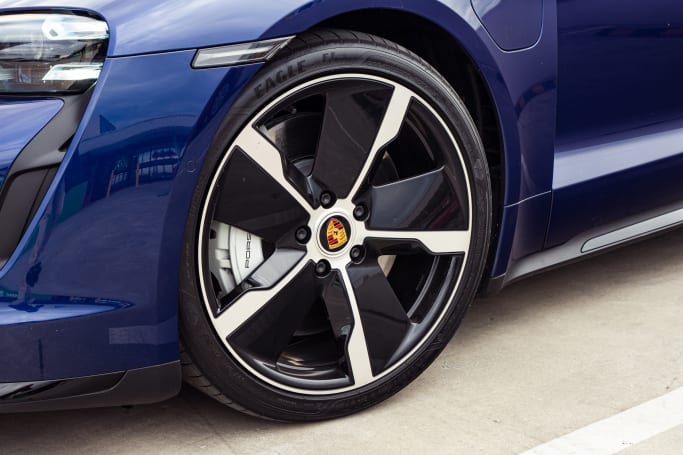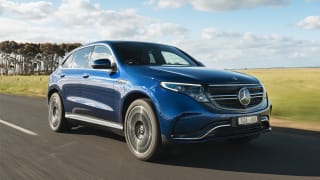The Taycan Turbo is the second from the top in the Taycan range and costs $271,200, before on-roads and any boxes ticked in its absurdly long options list.
Suffice it to say the value equation here is different from almost any other electric car right now.
Where the Taycan sits, it’s trying to take dollars from other Porsche products, perhaps even more exclusive rivals, and barely registers on the radar of other European EVs, like the Mercedes-Benz EQC (from $140,771), Jaguar I-Pace (from $128,248), or perhaps the more size-equivalent US-sourced Tesla Model S (from $133,175).

Audi will also launch its car on the Taycan underpinnings, the e-Tron GT next year, so keep an eye out for that, too.
At twice the price of the closest EVs in Australia, Porsche hopes you’re buying more than just a premium electric car.
You’re buying a Porsche, and this is reflected in not just this car’s iconic design, but some of the tech underpinning it. This is a properly dedicated EV, not a combustion chassis converted for the era of electrification.
The options list, mind you, is some 125 items long, with costs ranging from over $14,000 for the carbon ceramic brake package or carbon fibre wheels, to zero cost for various cable adapters and standard paint colours.
Our car had 13 option boxes ticked, bringing the total to $304,500, before on-roads. These included ‘Taycan Exclusive Design’ wheels - $7110, with gloss-black paint highlights - $2500, two-tone leather interior - $5630, Sport Chrono package - $2340, Passenger display - $2150, Active parking support - $1890, Black exterior highlight trims - $1720, ‘Porsche Electric Sport Sound’ - $1050, 4+1 seat layout - $1000, LED Matrix headlights with ‘Dynamic Light System Plus’ - $990, window highlights in black gloss trim - $720, Porsche logo LED door lights - $600, and black badgework - $500.

While I’d be leaving some of those aesthetic items out, I have to say our Taycan looks the business.
Items off the options list which ship standard with the Taycan Turbo include a 10.25-inch multimedia touchscreen with wireless Apple CarPlay and Android Auto connectivity, gesture controls and a second touchscreen for climate and other functions, real leather interior trim, ambient interior lighting, a 14-speaker Bose sound system, 14-way electrically adjustable front seats with heated seating front and rear, quad-zone climate control, LED headlights and tail-lights, an ambient interior lighting package, 20-inch ‘Taycan Turbo’ alloy wheels, and a tungsten carbide brake package.
An array of active safety functions is also standard on this car, which we’ll take a look at later in this review.






















